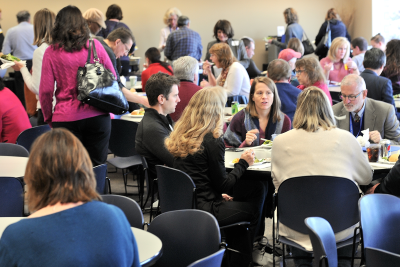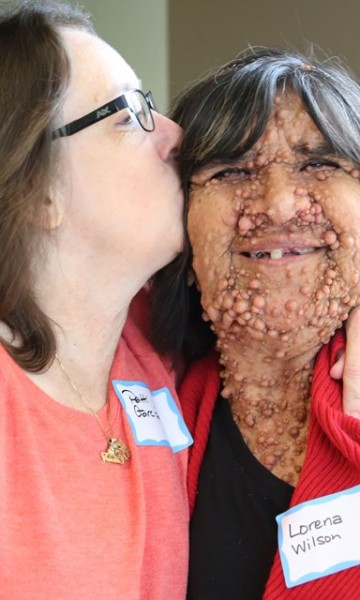be iNFormed about Vascular Issues in Neurofibromatosis Type 1
What should you know?
People with neurofibromatosis type 1 (NF1) can have many medical problems related to tumors, bone disease and blood vessel disease. Although heart and blood vessel disease is the most common cause of death for all people in the United States, people with NF1 who are less than 40 years are twice as likely to die because of heart and blood vessel disease, than people without NF1. Blood vessel disease in NF1 can take several forms, including aneurysms, pheochromocytomas, renal artery stenosis, and high blood pressure. These will be discussed below.Blood vessels in people with NF1 can also have abnormal wall structures. An out pouching of the blood vessel is called an aneurysm. These can occur in any artery in the body but are most common in the aorta, the main central artery of the body, and in arteries in the brain. Maybe as many as 5% of people with NF1 have aneurysms. Because the wall of the out pouching is abnormally weak, blood can leak from aneurysms or the aneurysms can burst causing severe blood loss, stroke or even death. Aneurysms can cause many different symptoms depending on where they are located. You should always alert your doctor about new unexplained headaches, limb pain, fatigue or other concerns. Some aneurysms do not cause any symptoms. Aneurysms are identified with special imaging of the blood vessels.About 1 out of every 100 people with NF1 has a benign tumor in the area of the kidney called a pheochromocytoma. This tumor produces adrenaline-like substances and increases the blood pressure and heart rate. The increase in heart rate and blood pressure can be severe enough to cause death. These tumors typically appear in young adulthood. They are discovered by getting a CT scan of the abdomen and measuring the adrenaline-like substances in the urine in young people with NF1 and unexplained high blood pressure. The pheochromocytoma can be removed, but this must be done carefully by experts in this field.
Renal artery stenosis also occurs in about 1 out of every 100 people with NF. This is a narrowing of the renal artery in the kidney and this narrowing changes many chemicals that regulate blood pressure throughout the body. It is identified in children and young adults with unexplained hypertension by special studies that show the blood vessels in the kidneys. There are several ways to try to treat this narrowing, but they do not always solve the problem, particularly in those who have NF1.
Even when not including pheochromocytomas or renal artery stenosis, high blood pressure is very common in people with NF1. In young children or pregnant women, pheochromocytoma or renal artery stenosis should be ruled out as a cause of the high blood pressure. Even so, most people with NF and high blood pressure will have what is called “essential hypertension,” meaning that we do not have a specific cause. Researchers are trying to discover why high blood pressure is so common in people with NF1 and how the genetic changes of NF1 can alter the properties of the blood vessels. There is some evidence that the blood vessel disease in people with NF1 might be caused by abnormal inflammatory cells or a change in the way that the blood vessels respond to oxidative stress and free radicals. For now, the most important thing is to identify and treat high blood pressure early to avoid the long term damage of high blood pressure that can lead to heart attacks and strokes.
What should you do?
- If you have sudden onset of the worst headache of your life, crushing chest pain, or sudden onset of trouble seeing in one eye, trouble talking, or trouble using your arm or leg, go to your local emergency room immediately. This may be the sign of a severe and life threatening vascular problem.
- See your primary care doctor and/or neurofibromatosis doctor at least once a year.
- Make sure that you are getting your blood pressure checked at least every 6 months. If you see multiple doctors, it is good to keep a notebook with your readings and share those with your primary care doctor and/or neurofibromatosis doctor.
- Inform your primary care doctor and/or neurofibromatosis doctor if you are having new headaches, dizzy spells, pain in the limbs or fatigue.
- Do not start smoking. If you do smoke, then discuss options to help you quit with your primary care doctor and/or neurofibromatosis doctor.
- Check with your primary care doctor and/or neurofibromatosis doctor first and then start a regular exercise program that involves aerobic activity.
- Have your cholesterol and lipid levels checked at least once a year if you are over 20 years old. Discuss the results with your primary care doctor and/or neurofibromatosis doctor.
- If you are over 45 years old, discuss with your primary care doctor and/or neurofibromatosis doctor whether or not you should start taking an aspirin a day to prevent heart attack and stroke.
- If your doctor puts you on medication for your blood pressure or for high cholesterol, make sure that you take it as directed. If the medication is giving you side effects or if you are having trouble affording your medications, discuss that with your doctor. He or she may be able to make changes in the medications to help.
References
JM Friedman, J Arbiser, JA Epstein, DH Gutmann, SJ Huot, AE Lin, B Mcmanus and BR Korf (2002) Cardiovascular disease in neurofibromatosis 1: Report of the NF1 Cardiovascular Task Force. Genetics in Medicine 4:105-111.







.png)





